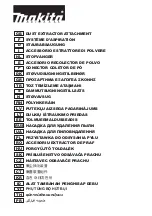
23
Carrying Capacity and Choice of Tools
What ratio of material thickness and hole diameter S/D Ø can I use?
There must be a certain ratio between material strength and the lowest hole or hole punch Ø.
An old rule of thumb is that the hole punch should be at least as big or even bigger than the
thickness of the material to be punched. The material thickness should never be bigger than the
hole punch Ø.
This rule no longer applies to our hydraulic punching units.
However with fast-acting, mechanical presses, it is still used because the process is very abrupt and in the process
the punch will be used to full capacity. However with our ALFRA APS punching unit the punching process is slower
and more smoothly executed. In this case holes can be punched with a diameter smaller than the thickness of the
material to be punched.
The recommended operating range for ALFRA APS punches lies below the solid A line in Figure 1.
In specific cases, S/D Ø ratios can be used which lie just below the dotted B
line. Due to the high stresses it leads to a greatly reduced punch lifespan in
the work area between line A and line B.
Example:
Holes to be punched in a steel plate S233.
What is the recommended ratio?
With steel S233 the shear strength lies at approximately 300 N/mm². At value
30 in the chart, go straight up to the line A, from there go left up to the S/D
diameter-ratio scale.
Result:
The recommended ratio is 1:1,3.
The upper limit of the ratio is the dotted B line, which indicates a ratio of 1:1,7.
That would mean that the thickness of the material to be punched should be
1,7 times higher than the diameter of the punch. It is obvious that the life
expectancy of a punch with this diameter ratio should be considerably shorter
than a 1:1,3 ratio. We therefore recommend only working to Line A, so there
is still plenty of tolerance.
Which minimal hole punch Ø can be used with the given material strengths?
Using Figure 2 the smallest punch diameter can be easily determined. There
are three different types of material indicated with different strengths.
Example:
Holes to be punched in steel S233 with a thickness of 20 mm.
How big should be the smallest punch Ø ?
On the horizontal scale for material thickness, at value 20 mm go straight up to
the full line of steel S233. Then horizontally left to the punch Ø scale.
Result:
= 15 mm Ø.
The breaking point of the stamp is obtained when the second line is reached.
Therefore it is recommended to proceed using the first method only. ALFRA
punch and die plates are manufactured from high quality material. Nevertheless
it is possible that a punch may break.
Ø
Pun
c
h
[
mm
]
Material Thickness [mm]
Shear strength
B
S/D
Ø
Rati
o
















































